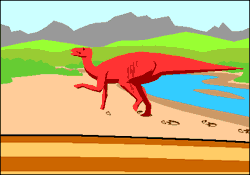



![]()



Question Database
Directions: Log onto
|
Question |
Answer |
| 1. What is a fossil? | Fossils are the remains of ancient animals and plants, the traces or impressions of living things from past geologic ages, or the traces of their activities |
| 2. How are fossils of hard mineral parts (like teeth and bone formed? |
|
| 3. Where are most fossils found? | Most fossils are found in sedimentary rocks - rocks
which were created when shells or small loose bits of rock are laid
down in layers. Examples of sedimentary rocks are limestone,
sandstone, clay and chalk. |